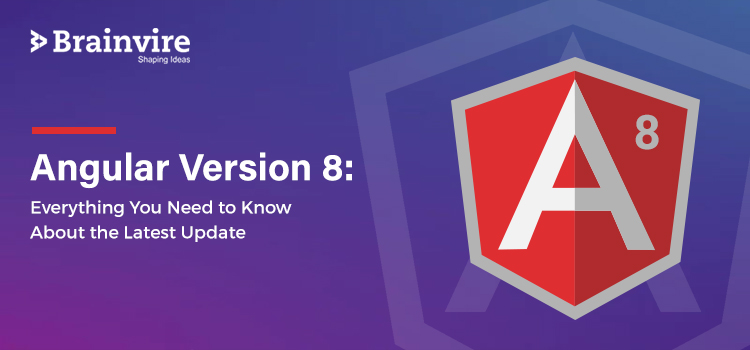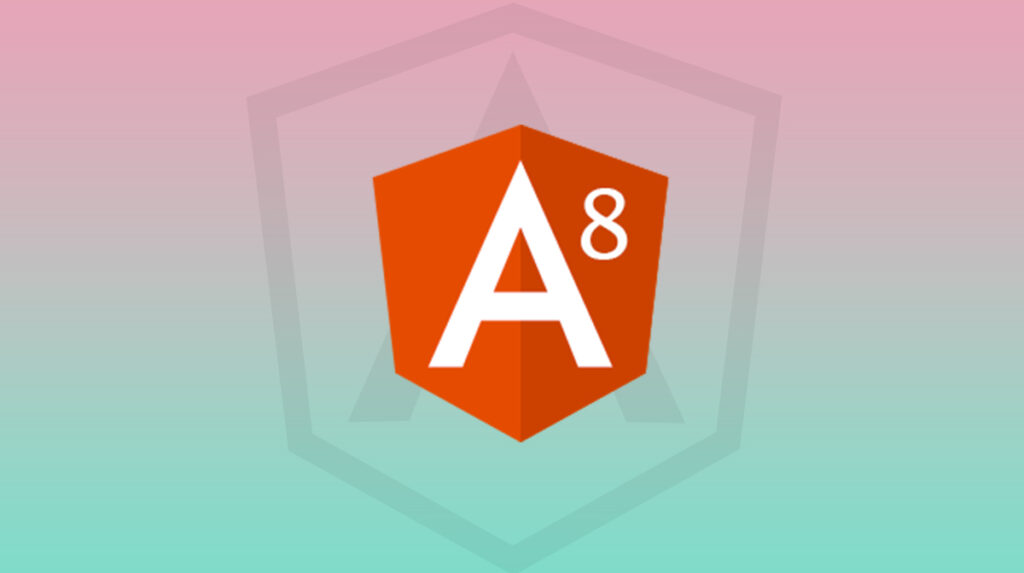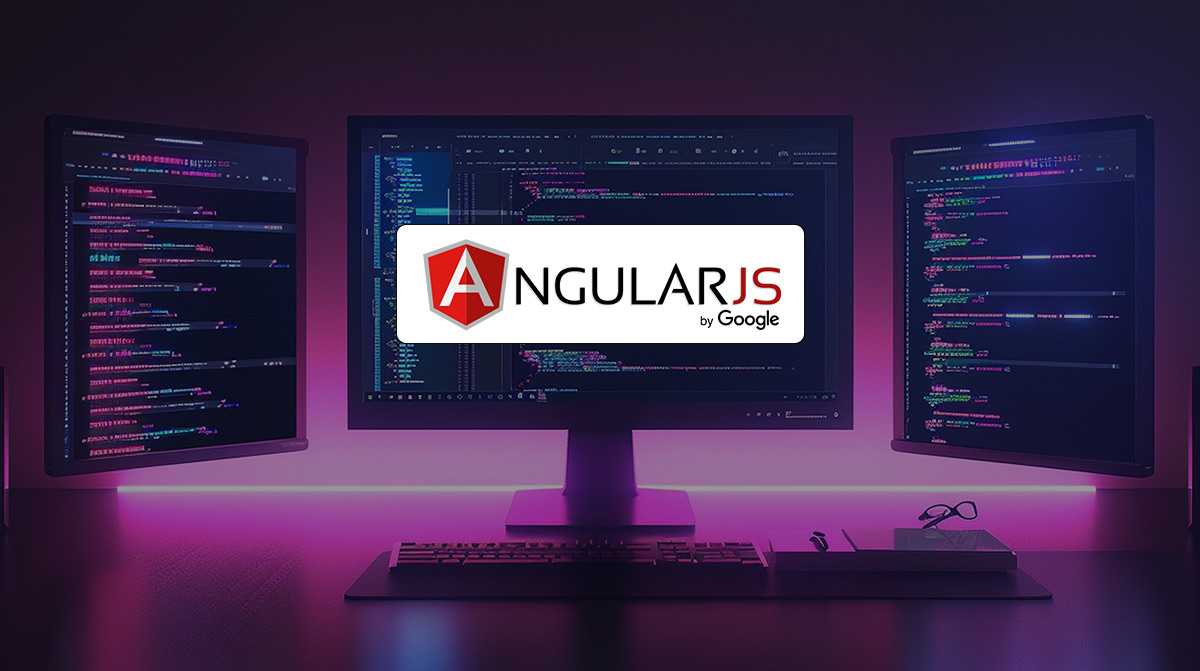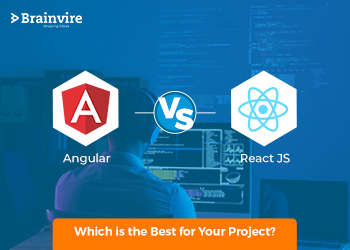
Angular Version 8 was recently launched in the market and we are here to inform you about all the nitty-gritty that’s involved in this latest release. In this piece, you are going to look at the following topics:
a. What’s new
b. Lazy routes and queries
c. Understanding the deprecated features and APIs of AngularJS
d. How to update to Angular Version 8
e. Final thoughts
What’s New
The latest Angular release is packed with quite a bunch of exciting features. This is all that you can expect to stumble upon in the new update:
1. Differential loading for performance optimization
Until so far, the common practice was to compile applications to the ECMAScript 5, so that both IE 11 and Google’s web crawlers can execute this program. But with the advent of the ECMAScript 2015 and its later versions, the program became all the more efficient; it began to allow compact bundles and became much easier for browsers to interpret. Because it was common to retreat to the ECMAScript 5 as the smallest common denominator, other contemporary browsers, however, were unable to use this functionality.
But the latest version update, which is inclusive of CLI 8, consists of a feature called differential loading. When you Hire Angular Developers and with the help of differential loading, you will now be able to produce separate bundles for legacy and evergreen browsers; and by doing so, you will drastically be able to reduce the number of polyfills that you would otherwise have to download.
2. Web workers
The latest update of Angular now allows you to offload all your heavy work into a separate worker altogether. This ultimately frees up the main lead, allowing the improvement of speed, and executing things in a parallel manner in the browser.
3. Builders and Deploy
Angular version 8 allows you to use the Builders API, (also known as Architect API). Angular mostly uses builders from serve, test, build, lint, and e2e main operations. Thus, you are now allowed to use these builders in the angular.json files. Additionally, you also have the liberty to create your own custom builders.
4. SVG as a Template
Version 8 now supports a template feature with a file extension of the SVG template. With this, you can now use the SVG extension file as a template in place of HTML file without having to take care of any extra configuration settings. But a question that persistently remains in most of the users’ minds is why would they need to use a .svg file as a template instead of using the whole image in an HTML file?
The main reason behind this is that when you use SVG as a template, you can also use it as a directive. And as a result, you can bind it just as how you would bind the HTML templates. If you follow this approach, then you can dynamically create collaborative graphics in all your applications that run on Angular.
5. Ivy Rendering Engine
Although still in its experimental phase in the Angular 8 release, you can still test Ivy by creating an app with enable-ivy flag, which is supposed to be set as true. You must keep in mind that this feature still requires the opt-in preview mode and is not fully functional. Additionally, View Engine is still recommended for new apps. If you want to enable Ivy in an existing project, set ‘enableIvy’ option in ‘angularCompilerOptions’ in your project’s ‘tscongif.app.json’.
With the addition of Ivy rendering feature in Angular 8, you stand the advantage of backward compatibility. Furthermore, developers can rejoice as this feature also allows you to debug templates.
6. Bazel Support
Everybody loves Google for introducing Bazel. Even though Bazel is in the opt-in preview mode on Angular 8, you can expect the following advantages from this feature:
- It will lead to faster build time. The first build time does take a few minutes but the concurrent builds are expected to be much faster. With this feature, the CI now gets completed within 7.5 minutes instead of a whopping 60 minutes.
- Bazel allows incremental building, using which you will be able to build and deploy only the areas of the app that need to be changed rather than the entire app.
7. Changes in Lazy Loading
Ever since its first release, Angular’s router has always supported lazy loading. To this day, this feature was accomplished by identifying a magic value of the loading module. Starting with version 8, you won’t require any magic value or magic string.
This feature, as opposed to the previous versions, is now aligned with the standard way of performing lazy loading across various tools; and you can do so using the import() statement.
8. Support for $location AngularJS API
Version 8 comes with the support of $location service, which is integrated with a new package called angular/common/upgrade. This feature offers the following benefits:
- It allows the ability to retrieve the state from the location service itself.
- Using this, you can track all the concerned location changes.
- It further allows you to read hostname, protocol, port, and search properties, all of which are available in AngularJS.
- The version comes with the MockPlatformLocation API that gets added to the test location service.
9. Service Worker
Since the usage of PWA is growing day by day, a lot of improvements have been made to the service worker. One of the major improvements to this module is SwRegistrationOptions. Furthermore, the feature supports multiple apps in just one domain.
10. Form Improvements
Angular Version 8 has led to a variety of form improvements in the program, some of which are mentioned below:
- In this update, the markAllAsTouched method is added to mark all the controls lying in ‘FormGroup’ as ‘touched’. This feature is especially useful if you wish to trigger the validation for all controls that lie in a ‘FormGroup’.
- You can now ‘clear’ (remove all) elements from ‘FormArray’.
Also, to remove all the elements from ‘formArray’, you had to initially loop, but that’s not applicable anymore. With the onset of the latest update, you can easily incorporate a native method of carrying out this task.
11. Performance Improvements
The version 8 is packed with excellent performance-related updates. At present, the procedure followed is quite expensive. Here, ‘ServerRendererFactory2’ creates a new instance of ‘DomElementSchemaRegistry’ for each and every request. However, henceforth, it will begin sharing the global instance of ‘DomElementSchemaRegistry’.
12. Working around Usage Analytics Data
In the latest Angular update, the Angular CLI functionality can collect usage analytics data so that the Angular team can begin prioritizing features as well as improvements. So, when it is time for you to update the CLI projects, Angular version 8 will opt-in with the ‘ng analytics on’ options. If this is allowed to go on a global scale, the program can easily collect data and provide it to the said Angular team for improvement and well-programmed future releases. The program is set to collect data from the following set of commands: the flag in use, Operating System, Node.js development Version, CPU Count, RAM Size, execution time, and error with crash data.
13. Provides Support for Typescript 3.4.x
Angular 8 now makes use of TypeScript 3.4 (Angular version 7 used TypeScript 3.2). The update has quite a few breaking changes, all aimed at increasing user convenience. So if you want to use Angular 8 for any of your applications, you will first have to upgrade to at least Typescript 3.4 or above.
14. Angular Firebase
If you are some who constantly makes use of Angular Firebase, version 8 has brought in some really good news for you. With the latest update, you can now deploy your application. All that you will have to do now is run a said command for deploying the application using the CLI.
15. PNPM Support
Angular CLI, which is inclusive in version 8 also supports a new package manager called PNPM, which further includes NPM and Yarn. You also need to note that the ‘ng add’ command now provides a new flag called – – registry. The – – registry flag allows you to add packages from any private NPM registry. Additionally, this command is already obtainable in the Angular CLI version for the ‘ng update’ command
Lazy Routes and Queries
The two most important things that you will certainly notice while working on the latest version are lazy routes and queries.
As mentioned earlier, the latest Angular update has changed the way you can work on lazy loading in the program.
Queries
In AngularJS, queries are referred as the following components:
- ViewChild (affected)
- ContentChild (affected)
- ViewChildren (this is not affected by the upgrade)
- ContentChildren (this is not affected by the upgrade)
If the Angular CLI is unable to automatically infer whether to use static or dynamic resolution, the program will add a corresponding comment and warning on your console.
Understanding the deprecated features and APIs of AngularJS
The latest Angular update consists of several deprecated features, some of which include template syntax, deprecated API usage, configuration options, and more. Here’s a little more on the topics:
a. Web Tracing Framework integration
Also known as WTF, web tracing framework was introduced by Angular to test its underlying Angular applications. Since this functionality does not work for the majority of Angular applications today, it has been deprecated in Angular version 8.
b. The /deep/, >>>, and :ng-deep component style selectors
In the Angular 8 version, since the shadow-dom-piercing descendant combinator is deprecated, its integration has been removed from major browsers and tools. For instance, in Angular version 4, the program deprecated integration in Angular for all 3 entities: /deep/, >>>, and ::ng-deep. Thus, until it gets removed, ::ng-deep is preferred for usage as it provides better compatibility options with the tools in use.
c. The <template> tag
The <template> tag in AngularJS was long deprecated in version 4. This was done to avoid any collision with the DOM’s element of the same name, especially when used in web components. Instead of this now, the <ng-template> template is being used.
d. The ngForm element selector
The support to use the ngForm element selector was simply deprecated in Angular version 6. This decision of deprecation was taken into effect so that the program becomes consistent with other core Angular selectors, which are usually written in the kebab-case.
Angular version 8 has brought with it a variety of new updates that you, as a user, will enjoy working on. To know more about version 8, you can get in touch with a good AngularJS development company.
How to update to Angular Version 8?
After scanning through all of this, in case you are wondering how to upgrade to version 8, we have you covered.
For updating your system to Angular version 8 all by yourself, you can directly go to this website: https://update.angular.io/. On this site, you can easily choose the start and target version. After that, it will guide you through a set of instructions on how you should go about updating your codebase.
If you think this is a very minute and tedious process, then you can always reach out for Angular Development Services.
Final thoughts
The much-awaited Angular version 8 is finally here, and the program has brought with itself some excellent and breakthrough changes to look forward to. The Angular team has done an excellent job, and the latest updated is packed with remarkable and exclusive new features. Every update turns the user experience better and smoother, and it is sure to attract more users in the coming days.
From what can be predicted, version 8 looks like it is marching towards automation, unlike the previous versions, which typically revolved around a handful of manual features that required human commands to execute the performance.
The future of Angular surely looks positive, but the majority of it depends on how you use it. If you are just starting out to explore this program, then you might want to consider having a reputed Angular development company by your side for better assistance.
Related Articles
-
Minimize Code Duplication and Performance Problems in projects with Angular Techniques
Angular is an open-source, type-script-based, dynamic, full-featured framework led by google.But one of the most common problems the IT industry faces during software project development is unnecessary code duplication. It happens at
-
Enhanced Development Of Web & Mobile Application With AngularJS
Talking About Enhanced Development Of Web & Mobile Application With AngularJS, Are you wasting much time in developing a web and mobile application? If yes, then you need to look
-
Angular Vs ReactJs: Which is the Best for Your Project?
There are many developers, both newbies and experienced, who use Javascript to create their application or project. However, there exists an uncertainty when they make a decision about which library



